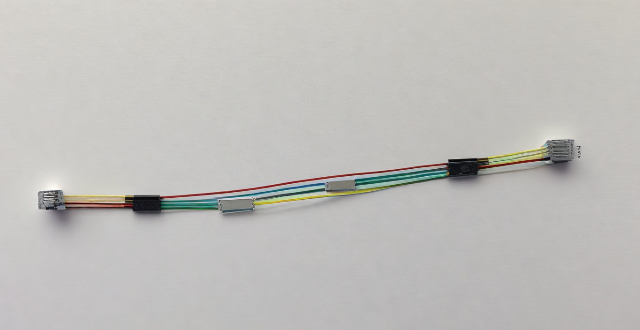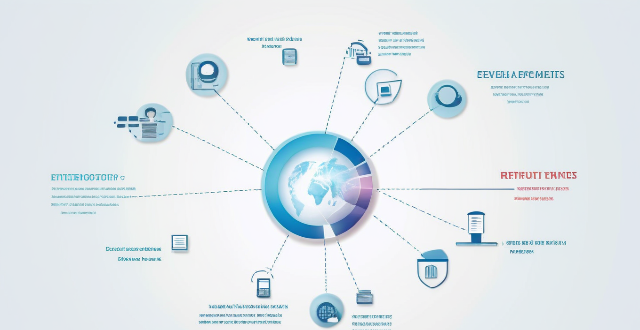Network Broadband

What equipment do I need for fiber optic broadband ?
Fiber optic broadband requires a modem/router combo, Ethernet cables, an optional network switch, powerline adapters for extending network reach, and wireless access points for improving Wi-Fi coverage.

Will 5G replace wired broadband connections ?
This article discusses the potential of 5G technology to replace wired broadband connections. It highlights the key features of 5G, including higher speeds, lower latency, and greater capacity. The article also emphasizes the advantages of wired broadband connections, such as reliability, consistent speeds, and security. While 5G has its pros, such as mobility, scalability, and cost-effectiveness, it also has its cons, including coverage issues, limited range, and infrastructure costs. The article concludes that while 5G has the potential to revolutionize wireless connectivity, it is unlikely to completely replace wired broadband connections in the near future.

How do I know if my current broadband speed is sufficient for my needs ?
Broadband speed is crucial for internet experience and affects downloads, streaming, and browsing. To determine if your current speed is sufficient, test it using online tools like Speedtest.net or Fast.com. Evaluate your internet usage considering the number of devices and online activities. Suitable broadband speeds vary by activity, with basic browsing requiring 5-10 Mbps and gaming needing 25-50 Mbps. Maximize your speed by upgrading plans, optimizing networks, limiting device usage, and using wired connections.

What technology is used to extend network coverage in remote locations ?
In remote locations, several technologies are used to extend network coverage, including satellite internet, wireless broadband (Wi-Fi), cellular data, long-range radio networks (LoRaWAN), and fiber optic cables. The choice of technology depends on factors such as cost, availability, and the specific needs of the users in those areas.

Is fiber optic broadband available in my area ?
Fiber optic broadband is becoming increasingly popular due to its high speed and reliability. However, the availability of fiber optic broadband depends on the area you live in. In this article, we will discuss how to check if fiber optic broadband is available in your area. The first step is to check with your current internet service provider (ISP) if they offer fiber optic broadband in your area. You can contact them through their website or customer service hotline. They should be able to provide you with information about the availability of fiber optic broadband in your area. There are several online tools that can help you determine if fiber optic broadband is available in your area. One such tool is the [National Broadband Map](https://www.broadbandmap.gov/), which provides detailed information about broadband availability across the United States. Another tool is the [Google Fiber Checker](https://fiber.google.com/cities/), which allows you to enter your address and see if Google Fiber is available in your area. Local government agencies may also have information about the availability of fiber optic broadband in your area. You can contact your city or county government office and ask if they have any information about fiber optic broadband providers in your area. If you have friends or neighbors who use fiber optic broadband, you can ask them if they know of any providers in your area. They may be able to provide you with valuable information about the availability of fiber optic broadband in your area. In conclusion, checking the availability of fiber optic broadband in your area can be done by contacting your ISP, using online tools, checking with local government agencies, and asking your neighbors. By following these steps, you can determine if fiber optic broadband is available in your area and choose the best provider for your needs.

How fast is fiber optic broadband compared to other types of internet connections ?
Fiber optic broadband is the fastest internet connection type, offering significantly faster speeds and more reliable performance compared to DSL, cable, and satellite connections. Fiber optic broadband has very low latency, making it ideal for real-time applications like online gaming and video conferencing. It is also less susceptible to interference and signal degradation, resulting in more stable and consistent performance. Overall, fiber optic broadband is well-positioned to handle increasing bandwidth requirements due to its scalability and capacity for faster speeds.

What is 5G network and how does it work ?
The 5G network is the fifth generation of mobile networks, offering significant improvements in speed, capacity, and responsiveness over its predecessor, 4G. It utilizes higher frequencies, advanced antenna technology, and reduced latency to provide enhanced mobile broadband, lower latency, increased reliability, massive IoT connectivity, and improved energy efficiency. The rollout of 5G worldwide is expected to enable new applications and services that were not possible with previous network technologies.

What role does software-defined networking (SDN) play in enabling network slicing ?
Network slicing is a key feature of 5G networks that allows operators to create multiple virtual networks on top of a shared physical infrastructure. SDN plays a crucial role in enabling network slicing by providing the necessary flexibility and programmability to manage and control the network resources. The SDN architecture consists of three main components: the data plane, the control plane, and the management plane. SDN enables network slicing by providing a centralized view of the network resources and allowing operators to dynamically allocate these resources to different slices based on their QoS requirements. Key benefits of SDN for network slicing include flexibility, programmability, centralized control, and resource optimization. Use cases for SDN in network slicing include mobile broadband, IoT, and enterprise networks.

Are there any potential drawbacks or challenges with implementing network slicing ?
Network slicing is a promising technology that allows multiple virtual networks to coexist on a shared physical infrastructure. It enables operators to provide tailored network services for different use cases, such as enhanced mobile broadband (eMBB), ultra-reliable low-latency communications (URLLC), and massive machine-type communications (mMTC). However, there are potential drawbacks and challenges associated with implementing network slicing, including the complexity of management and orchestration, significant infrastructure investment required, standardization and interoperability issues, skill gap within organizations, and regulatory and legal aspects to consider.

Are there any disadvantages to using fiber optic broadband ?
Fiber optic broadband, known for its high speed and reliability, also has disadvantages such as high cost, limited availability, technical issues, speed variations, and environmental impact.

How much does fiber optic broadband cost ?
The cost of fiber optic broadband varies based on provider, location, speed, and additional fees. It is recommended to compare plans from different providers and consider all associated costs before making a decision.

Will upgrading my broadband improve my online gaming experience ?
Upgrading broadband can enhance online gaming by reducing latency and increasing speeds, stability, and bandwidth, leading to smoother gameplay and fewer disruptions. However, it is important to consider costs, hardware compatibility, provider options, and potential trial periods before deciding on an upgrade.

How does fiber optic broadband work ?
Fiber optic broadband is a high-speed internet connection that uses fiber-optic cables to transmit data. It works by converting electrical signals into light signals, which are then sent through the fiber-optic cables. The process involves conversion of electrical signals to light signals using a modem, transmission through fiber-optic cables, amplification of light signals using optical amplifiers, and conversion back to electrical signals using another modem. Fiber optic broadband offers several advantages over other types of internet connections, including higher speeds, greater bandwidth, improved reliability, and longer transmission distances.

What technology is used in network expansion ?
The text describes various technologies and techniques used in network expansion to increase capacity and coverage, including fiber optics, wireless technologies, software-defined networking (SDN), network function virtualization (NFV), cloud computing, edge computing, network automation and orchestration, multiprotocol label switching (MPLS), cable modems and DSL technology, and submarine cables. Each technology is described in terms of its benefits and how it contributes to network expansion.

Can I upgrade my broadband speed without changing my internet service provider (ISP) ?
To upgrade your broadband speed without changing your ISP, first check your current plan for upgrade options. If upgrading your plan isn't possible or enough, consider adding a secondary connection, using a Wi-Fi booster, upgrading your modem/router, or optimizing your network. Contacting your ISP's customer support team can also provide information on available plans and help you choose the right one for your needs.

What are the benefits of upgrading to a higher broadband speed ?
Upgrading to a higher broadband speed offers benefits such as faster downloads, improved streaming quality, enhanced online experiences, greater connectivity, and future-proofing your internet needs.

Can you explain the function of a network switch in a home network setup ?
The article discusses the function of a network switch in a home network setup. The primary function of a network switch is to connect multiple devices together, either through Ethernet cables or wireless connections. It also manages data traffic within the network by forwarding data packets to their intended destination based on their IP address. Additionally, network switches enhance network performance by providing dedicated bandwidth to each connected device and prioritizing certain types of traffic over others. Finally, network switches come with various security features that help protect your home network from unauthorized access and cyber threats.

How does network slicing work in 5G technology ?
Network slicing is a feature of 5G technology that allows operators to create multiple virtual networks on a shared physical infrastructure. This enables them to offer customized services with specific quality of service (QoS) and quality of experience (QoE) requirements for different types of customers and applications. The implementation of network slicing involves several key components such as Network Function Virtualization (NFV), Software-Defined Networking (SDN), Network Management and Orchestration (MANO), and Policy Management. The steps involved in implementing network slicing include requirement analysis, resource allocation, virtual network function deployment, resource management, policy enforcement, monitoring and optimization, and lifecycle management. Network slicing offers benefits such as customization, resource efficiency, scalability, improved performance, and enhanced security.

What factors should I consider before upgrading my broadband connection ?
This topic summary discusses the key factors to consider before upgrading a broadband connection, including speed requirements, data caps, reliability, cost, availability, customer support, and additional features. It emphasizes the importance of evaluating current internet usage, future needs, monthly limits, overage charges, downtime frequency, service outages, contract terms, pricing plans, provider options, infrastructure, service quality, user reviews, bundling opportunities, and security measures. The conclusion suggests that by considering these factors, one can make an informed decision that meets current needs and anticipates future changes in internet usage patterns.

Can I upgrade my broadband speed while keeping my current phone line ?
Yes, you can upgrade your broadband speed without changing your current phone line. Check your current plan, contact your ISP, choose a new plan, and keep your current phone line while enjoying faster internet speeds. Benefits of upgrading include faster downloads and uploads, improved video quality, and better connectivity for multiple devices.

What are the advantages of fiber optic broadband over other types of internet connections ?
Fiber optic broadband offers faster speeds, greater bandwidth, better reliability, longer distance coverage, and future-proof technology compared to other types of internet connections. It is ideal for activities such as streaming high-definition videos, online gaming, and video conferencing, and can support multiple devices without lag or buffering issues. Fiber optic cables are not affected by electromagnetic interference or noise, ensuring a more consistent and stable connection. Additionally, fiber optic broadband is suitable for rural areas or large campuses where the distance between the provider's infrastructure and the user's location may be significant. Investing in fiber optic broadband is a smart choice for the future as it will be able to support higher speeds and greater bandwidth requirements.

What is fiber optic broadband ?
Fiber optic broadband, also known as fiber internet, is a type of internet connection that uses fiber-optic cables instead of traditional copper wires. It offers faster and more reliable internet speeds compared to other types of connections such as DSL or cable. Advantages: Speed: Fiber optic broadband can provide download speeds up to 100 times faster than traditional copper wire connections. Reliability: Fiber-optic cables are less susceptible to interference and signal degradation, making them more reliable than copper wires. Scalability: As technology advances, fiber-optic networks can be easily upgraded to support higher bandwidth needs without the need for new infrastructure. Security: Fiber-optic networks are generally more secure than copper wire networks because they are not affected by electromagnetic interference. Disadvantages: Cost: Fiber optic broadband can be more expensive than traditional copper wire connections due to the cost of installing fiber-optic cables. Availability: Fiber optic broadband may not be available in all areas, particularly in rural or remote locations. Installation: Installing fiber-optic cables requires specialized equipment and trained technicians, which can make installation more complex and time-consuming.

How does network expansion affect the overall network performance ?
Network expansion can significantly impact overall performance, offering benefits such as increased bandwidth, improved redundancy, and enhanced connectivity. However, challenges like compatibility issues, security concerns, and complexity management must be addressed to maintain optimal performance. Careful planning is crucial for successful network expansion.

How does network slicing differ from traditional network management techniques ?
Network slicing, enabled by SDN and NFV, allows creating multiple virtual networks on a common infrastructure for tailored services like IoT and automotive systems. It offers dynamic resource allocation, scalability, better security, and can simplify management through automation. In contrast, traditional network management is monolithic with static resources, complex and potentially less secure. Network slicing is a more adaptable solution for diverse and growing connectivity needs.